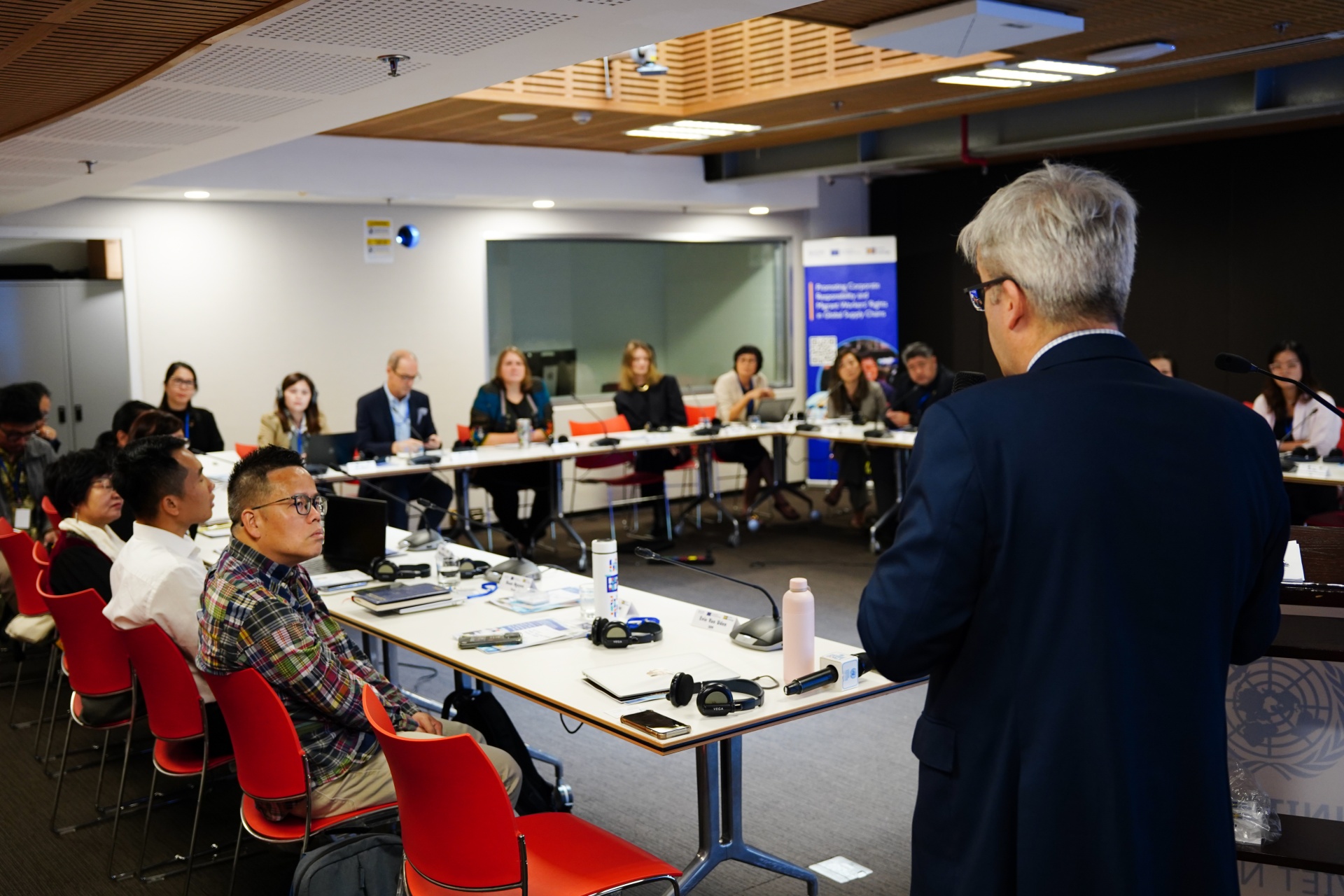TROY professor receives over $500K grant to research ways to test safety of recycled plastics – Troy University

Research Initiative on Recycled Plastics Safety and its Alignment with Sustainable Development Goals
Project Overview
- Grant Recipient: Dr. Shaoyang Liu, Professor of Chemistry and Physics, Troy University.
- Funding Body: National Science Foundation (NSF) under the Research in Undergraduate Institutions (RUI) program.
- Grant Amount: $534,194.
- Research Title: RUI: Sensitive and Rapid Detection of Hazardous Volatile Organic Compounds (VOCs) in Recycled Plastics Using Solid-Phase Microextraction.
- Location: Troy University’s Center for Materials and Manufacturing Sciences.
Core Objectives and Methodology
The primary objective of this research is to develop a sensitive, convenient, and reliable method to ensure the safety of recycled plastic products for consumer use. This directly supports the principles of a circular economy and sustainable production patterns.
- Problem Statement: Recycled plastics can contain impurities, including toxic residues and hazardous Volatile Organic Compounds (VOCs), which pose potential health risks and undermine consumer confidence.
- Proposed Solution: The project will develop a robust testing method to detect hazardous VOCs, thereby improving the quality and safety of recycled materials.
- Methodology: The research will utilize headspace solid-phase microextraction coupled with gas chromatography-mass spectrometry (HS-SPME-GC-MS). Key parameters such as fiber type, temperature, and exposure time will be optimized to maximize detection sensitivity. The finalized method will be validated using commercial recycled plastic samples.
Contribution to Sustainable Development Goals (SDGs)
This research project significantly contributes to several United Nations Sustainable Development Goals by addressing critical health, environmental, economic, and educational challenges.
- SDG 3: Good Health and Well-being
- The project aims to protect consumers and workers from health risks associated with hazardous chemicals in recycled products.
- By ensuring product safety, the research contributes to the development of healthier and safer communities.
- SDG 12: Responsible Consumption and Production
- The core of the research is to promote sustainable production patterns by making plastic recycling safer and more reliable.
- Developing a tool to monitor VOC contamination improves the quality of recycled plastics, boosts consumer confidence, and encourages higher recycling rates, fostering a circular economy.
- SDG 9: Industry, Innovation, and Infrastructure
- The project fosters innovation by creating state-of-the-art analytical chemistry techniques for industrial application.
- Improving the quality and marketability of recycled plastics enhances the viability and sustainability of the recycling industry.
- SDG 8: Decent Work and Economic Growth
- A more robust and trusted recycling industry can lead to job creation and economic growth in the green technology sector.
- SDG 11, 14, and 15: Sustainable Cities and Communities, Life Below Water, and Life on Land
- By encouraging higher recycling rates, the research helps reduce the volume of plastic waste in landfills and natural ecosystems.
- This reduction in pollution protects terrestrial and aquatic environments from the harmful effects of plastic waste.
- SDG 4: Quality Education
- The grant provides Troy University undergraduate students with valuable opportunities for hands-on engagement in advanced scientific research.
- This experience strengthens the regional STEM workforce by equipping students with practical skills in modern analytical techniques.
Broader Implications and Future Outlook
- Policy and Regulation: The findings from this research have the potential to inform policymakers and regulatory agencies, contributing to the development of future safety standards for the plastic recycling industry.
- Economic Impact: By improving the quality and safety of recycled plastics, the project aims to boost their marketability, thereby enhancing the economic viability of the recycling sector.
- Environmental Sustainability: The ultimate goal is to increase the efficacy and appeal of recycling, leading to a significant reduction in plastic waste and its associated environmental damage.
Analysis of Sustainable Development Goals in the Article
1. Which SDGs are addressed or connected to the issues highlighted in the article?
- SDG 3: Good Health and Well-being: The research aims to develop methods to test for toxic residues and hazardous chemicals (VOCs) in recycled plastics, directly addressing the health risks posed to consumers and workers. The article states, “Monitoring and reducing hazardous VOCs protects consumers and workers from health risks, contributing to healthier communities.”
- SDG 4: Quality Education: The grant provides hands-on research opportunities for undergraduate students at Troy University, enhancing their skills in analytical chemistry and strengthening the future STEM workforce. The article notes, “…provides valuable opportunities for Troy University undergraduate students to engage in hands-on research… and strengthen the STEM workforce.”
- SDG 8: Decent Work and Economic Growth: By improving the quality and safety of recycled plastics, the research is expected to boost their marketability, enhance the viability of the recycling industry, and create jobs. The article mentions that this work “enhances industry viability, creates jobs and fosters innovation.”
- SDG 9: Industry, Innovation, and Infrastructure: The project is centered on scientific research and technological innovation, funded by the National Science Foundation. It focuses on developing a new, sensitive, and reliable testing method (HS-SPME-GC-MS) to upgrade the technological capabilities of the plastics recycling industry.
- SDG 12: Responsible Consumption and Production: The core theme of the article is improving the safety and effectiveness of plastic recycling. This supports the environmentally sound management of waste, encourages higher recycling rates, and aims to reduce overall plastic waste generation, aligning with sustainable production and consumption patterns.
- SDG 14 (Life Below Water) and SDG 15 (Life on Land): By aiming to increase recycling rates, the research contributes to reducing the amount of plastic waste that ends up in landfills and ecosystems, which helps protect both terrestrial and marine environments from plastic pollution.
2. What specific targets under those SDGs can be identified based on the article’s content?
- Target 3.9: “By 2030, substantially reduce the number of deaths and illnesses from hazardous chemicals and air, water and soil pollution and contamination.” The research directly supports this by developing a method to detect and monitor hazardous VOCs in recycled plastics, which are a source of chemical contamination.
- Target 4.4: “By 2030, substantially increase the number of youth and adults who have relevant skills, including technical and vocational skills, for employment, decent jobs and entrepreneurship.” The project provides undergraduate students with hands-on experience in “state-of-the-art analytical chemistry techniques,” which are relevant skills for the STEM workforce.
- Target 9.5: “Enhance scientific research, upgrade the technological capabilities of industrial sectors in all countries… encouraging innovation and substantially increasing the number of research and development workers…” The $534,194 grant from the NSF for “groundbreaking research” into a new testing methodology is a direct contribution to this target.
- Target 12.4: “By 2020, achieve the environmentally sound management of chemicals and all wastes throughout their life cycle… and significantly reduce their release to air, water and soil in order to minimize their adverse impacts on human health and the environment.” The research focuses on detecting hazardous chemicals within the plastic waste lifecycle to ensure recycled products are safe.
- Target 12.5: “By 2030, substantially reduce waste generation through prevention, reduction, recycling and reuse.” The article explicitly states that improving the safety of recycled plastics will “encourage higher recycling rates—ultimately reducing plastic waste in landfills.”
3. Are there any indicators mentioned or implied in the article that can be used to measure progress towards the identified targets?
- Indicator for Target 3.9: The development and validation of a “sensitive, convenient and reliable method to detect hazardous VOCs.” The success of the HS-SPME-GC-MS method as a robust testing tool would be a direct measure of progress.
- Indicator for Target 4.4: The number of undergraduate students participating in the research project. The article highlights that the grant “provides valuable opportunities for Troy University undergraduate students,” implying their participation is a key outcome.
- Indicator for Target 9.5: The amount of funding allocated to the research. The article specifies a “$534,194 grant from the National Science Foundation” as a direct investment in scientific research and innovation.
- Indicator for Target 12.4: The level of detection sensitivity for hazardous VOCs in recycled plastics. The research aims to “maximize detection sensitivity,” which can be measured and used as a standard.
- Indicator for Target 12.5: National or local recycling rates for plastics. The article implies that a key long-term goal is to “encourage higher recycling rates” as a result of increased consumer confidence in the safety of recycled products.
SDGs, Targets, and Indicators Table
| SDGs | Targets | Indicators |
|---|---|---|
| SDG 3: Good Health and Well-being | 3.9: Substantially reduce illnesses from hazardous chemicals and pollution. | Development and validation of a reliable method to detect hazardous VOCs in recycled plastics. |
| SDG 4: Quality Education | 4.4: Increase the number of youth and adults with relevant skills for employment. | Number of undergraduate students gaining hands-on research experience in analytical chemistry. |
| SDG 9: Industry, Innovation, and Infrastructure | 9.5: Enhance scientific research and upgrade technological capabilities. | The $534,194 grant from the NSF dedicated to research and development. |
| SDG 12: Responsible Consumption and Production | 12.4: Achieve environmentally sound management of chemicals and wastes. 12.5: Substantially reduce waste generation through recycling. |
Level of detection sensitivity for VOCs in recycled materials. Increase in plastic recycling rates. |
Source: troymessenger.com

What is Your Reaction?
 Like
0
Like
0
 Dislike
0
Dislike
0
 Love
0
Love
0
 Funny
0
Funny
0
 Angry
0
Angry
0
 Sad
0
Sad
0
 Wow
0
Wow
0



















































.jpg.webp?itok=0ZsAnae9#)

























